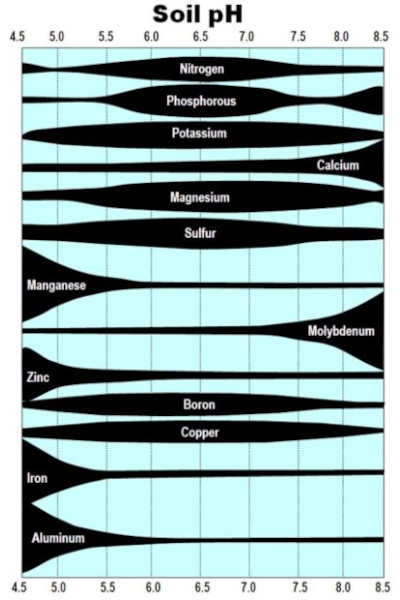By Jeremy Kichler
Fertilization can be a significant portion of the cost of producing forages. According to UGA production budgets, fertilization can range from 30 to 60% of the total variable cost of producing various forages. So, taking a little time to strategically plan your fertilization program can hopefully save you money in the end. Steps that you can take include soil sampling, application timing, and rate.
Take a soil sample…. One of the basic steps in determining a fertilization program is taking a soil sample. Soil samples give producers a strategy on applying enough fertilizer and or lime to maximize yields. Soil pH is a key factor to maintain root development and nutrient availability.

The table above illustrates the relationship between soil pH and the availability of plant nutrients in soils. For example, if soil pH drops below 6.0, nitrogen, phosphorus, and potash become less available. A wider bar in the table indicates an increased availability of the nutrient. If the soil pH drops below 5.4 then aluminum and manganese can be toxic to some crops. On the other hand, nutrients such as iron, manganese, zinc, and others become less available if the pH is too high. If soil pH needs to be adjusted higher then it is advised to apply the lime a few months ahead of planting.